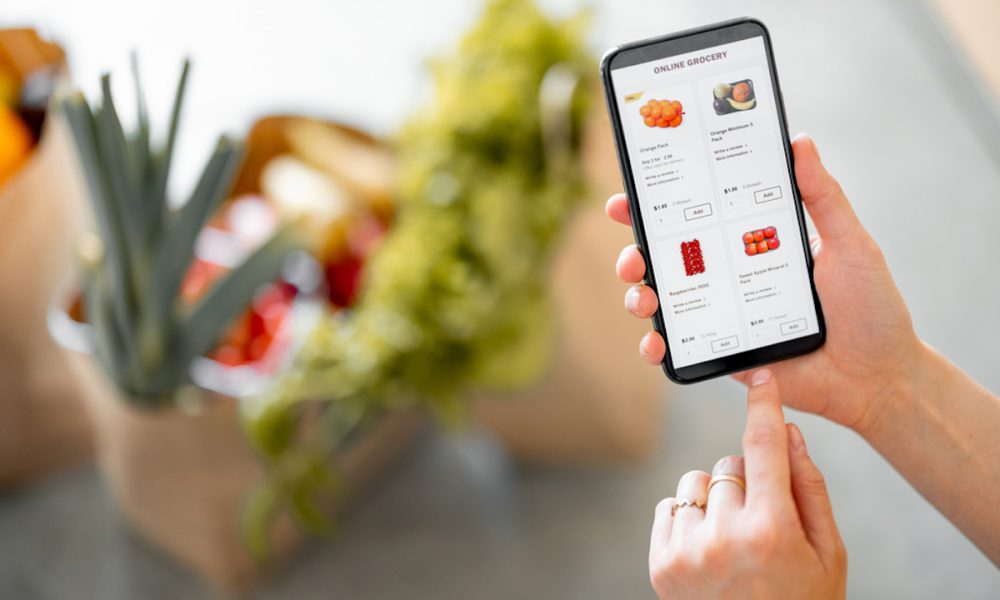In today’s era of digital transformation, the way we obtain necessary resources has undergone a significant revolution. Gone are the days of aimlessly meandering through bustling supermarket corridors looking for berries or other groceries, frantically searching for items listed on a handwritten compilation of goods to be procured.
With a mere handful of taps on our handheld electronic devices, we can seamlessly peruse an extensive array of merchandise and have it expeditiously transported to our abode. The cutting-edge technology employed in grocery shopping applications serves as the catalyst that propels this convenient and efficient shopping endeavor.
This article will explore the great world of “From Farm to Phone,” delving into the innovative technologies that power grocery shopping apps and revolutionize how we procure our daily essentials that goes from banana to tomato.
Mobile Applications and User Interface:
- Every triumphal supermarket purchasing application relies heavily on a carefully designed user interface (UI), establishing itself as the groundwork for seamless and untroubled purchasing involvement.
- These portable applications furnish a harmonious and user-friendly platform that permits individuals to explore diverse product categories, effortlessly hunt for specific items, and instantaneously append them to their virtual purchasing carts. The key to engaging users with varying technical expertise is to have a user interface that is simple and intuitive.
Product Catalogs and Inventory Management:
- There are many different apps available for grocery shopping that offer a wide variety of items sourced from different suppliers, farms, and manufacturers. These repositories have been carefully curated to include a large selection of products.
- Remarkably, these repositories are meticulously arranged and perpetually maintained in real-time to offer users an uninterrupted and harmonious shopping journey. Utilizing cutting-edge inventory management systems, stock levels are attentively tracked to avert any untoward instances of item unavailability, thus ensuring utmost customer contentment.
Machine Learning and Personalization:
- One of the key differentiators of grocery shopping apps is their ability to personalize the shopping journey for each user. Machine learning algorithms analyze customer data, purchase history, and preferences to offer tailored product recommendations and discounts. These apps enhance customer satisfaction and boost sales by presenting users with items they are likely to buy.
Geolocation and Delivery Services:
- Geolocation technology enables grocery apps to accurately identify the user’s location. This functionality plays a crucial role in promoting seamless delivery services. When a user orders items like strawberry, kiwi etc., the app can dispatch it to the nearest fulfillment center or grocery store.
- Furthermore, customers can track their deliveries in real-time, giving them assurance and control over their orders. The technical knowledge behind the geological services that deliver the food right at our front door should be respected. It ultimately increases customer satisfaction. Customers also have full control over the service as they can check the current location, exact time of dispatch and delivery.
Barcode Scanning and Augmented Reality:
- Within grocery shopping applications resides a domain of innovation, where certain apps possess the power of barcode scanning. This incredible feature allows users to scan their home belongings, adding them to their shopping lists seamlessly. Furthermore, a revolutionary advancement has arisen in the shape of augmented reality (AR) technology.
- By harnessing this cutting-edge capability, users can explore a new dimension within their in-app shopping experience. This augmented reality platform allows for the visual representation of products within the confines of users’ homes, effectively providing a virtual preview before committing to a purchase. This integration of AR technology cultivates an interactive and immersive shopping experience like no other.
Artificial Intelligence for Pricing and Promotions:
- Artificial intelligence (AI) deployment in grocery shopping apps goes beyond personalized recommendations. AI algorithms also analyze market trends, competitor prices, and user behavior to optimize pricing strategies and offer timely promotions. Dynamic pricing ensures users receive the best deals while helping retailers maximize profits.
Final Thoughts:
Upon meticulous review, it becomes strikingly evident that “From Farm to Phone” stands as a respected manifestation of the awe-inspiring process of technology in uplifting ordinary encounters. The existence of grocery shopping apps is a bright example of how innovative solutions can revolutionize traditional industries and provide unmatched convenience and efficiency to people.
As society wholeheartedly embraces this profound transition towards digitalization, it becomes absolutely crucial for both creators and consumers to remain acutely aware of the ethical and safety implications, thus ensuring that technology upholds its position as a positive force in the realm of grocery shopping and beyond.
So next time you want to make salads, swipe up and just click on order in a grocery shopping app.

